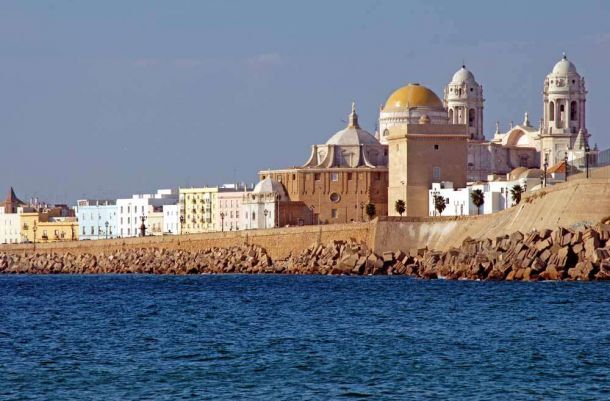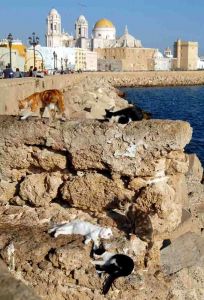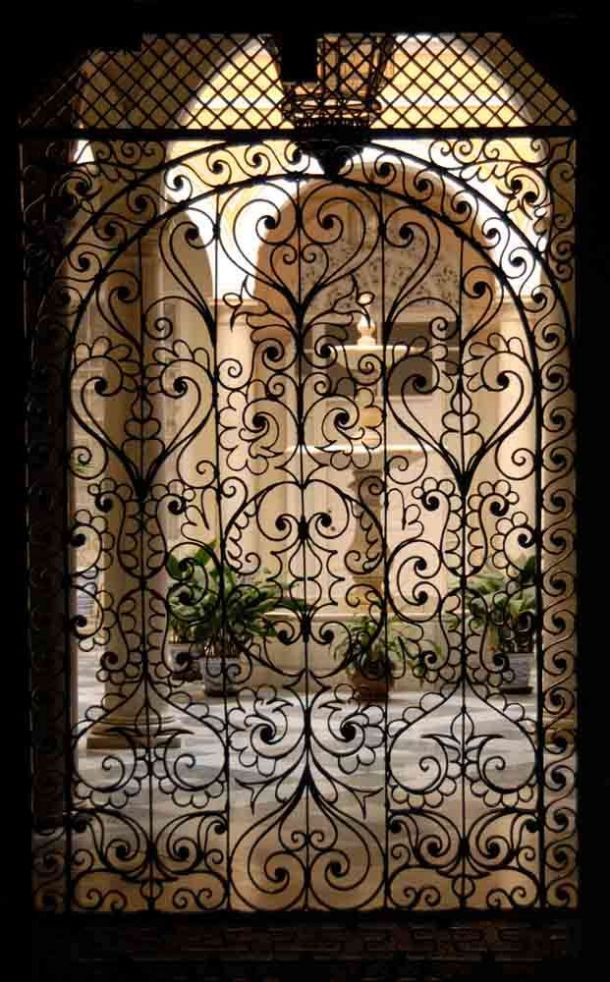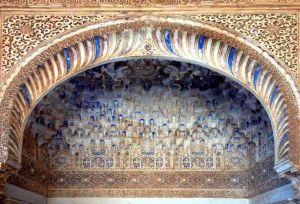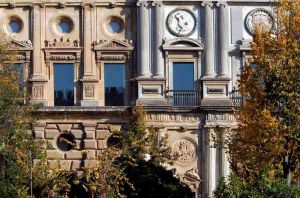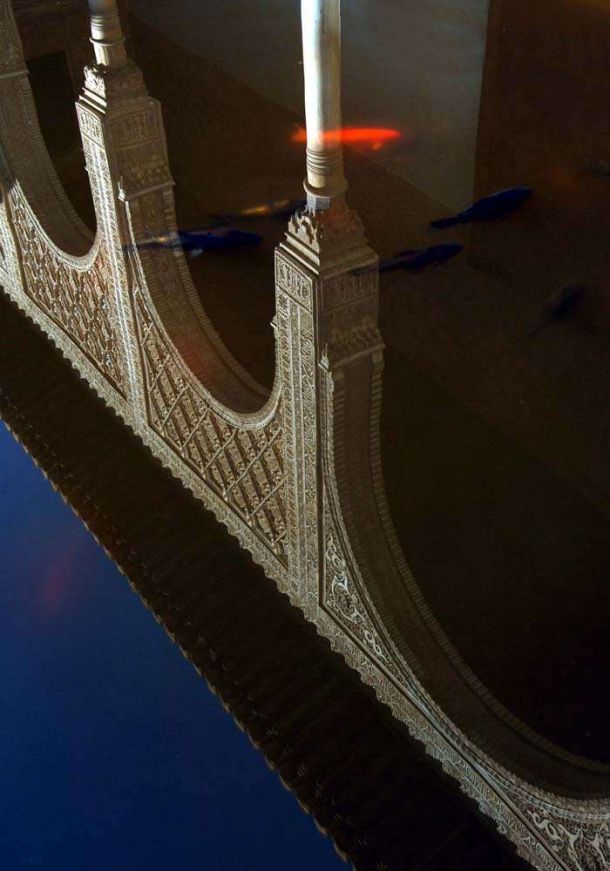Andalucia – all its wonders in a week.
We’re the first to criticise those who jet or cruise into a destination, take a quick look around and jet out again without even scratching the surface of an area but our rapid round-up of Andalucia’s highlights over just one week might just give you the inspiration and encouragement to spend a lot more time exploring this wonderful part of Spain.
We started out by flying to Malaga to spend time with a couple of Swiss friends, Roland and Marlys, who we hadn’t seen for years. They’d built themselves a stunning villa in the hills behind the city and entertained us royally for a few days before we were due to head off on a tour of Andalucía – we didn’t want our welcome to run out with them; as fish and friends tend to go off after three days!

We were almost reluctant to see the rest of Andalucia after staying with our friends in their villa in Malaga’s hills
We hired a car locally through Avis, a handy little Peugeot compact big enough to give us a comfortable ride and to take a couple of suitcases and headed off west down the coast.
We’d got a rudimentary plan, which boiled down to a complete circle around Andalucía, incorporating most of the major landmarks, towns and cities; staying in as many Parador as possible (traditional lodges and hotels of classic architecture) using our Michelin Guide and returning to Malaga in about a week.

We drove a roughly clockwise route virtually around the extreme four sides of this map, starting in Malaga
As we hadn’t really planned ahead, we were relying on booking ahead as we travelled each day in order to enjoy where we were, instead of sticking to a rigid schedule that would dictate a timescale. If we found we were running short of time, we could always truncate the circle as we would never be too far away from Malaga.

We’d decided on this plan as Andalucía promised so much and we wanted to cover as much as possible to give us a flavour for future longer visits. The area, which is a rugged sun-baked autonomous region of Spain is rich in, and originator of, most of the aspects for which Spain has a reputation – flamenco music and dancing, matadors and bullfights and of course tapas.
We shouldn’t forget however that the name Andalucia is derived from Arabic, itself derived from Vandalusia or ‘land of the Vandals.’
Andalucía was under the North African Moors for seven centuries from the 700’s, which left a distinctive mark on the landscape and culture with their Islamic style motifs, styles and cuisine that is so much part of Andalucian culture today; a factor that helps the region retain its spirit and passion, in the face of an inexorable spread of modernisation.
Despite the fashionable creep of golf courses along the coast and hotels frustrated in their rush to the sea by poorly planned and busy coastal motorways that forbid them from dipping their toes in the azure Mediterranean waters, Andalucía still offers the explorer huge rewards for investigating some remaining pockets of the coast and more particularly for moving inland to the hottest part of Europe where agricultural villages, imposing palaces and towering hilltop towns remained unblemished by time.
Our journey took a clockwise direction around Andalucia and once we’d got past the packaged high-rise tourist mayhem of the coast and turned inland we broke free into a Spanish world that’s a complete delight. The driving is easy, the roads never really busy, directions and satnav excellent and the overall trip a wonderful experience. If you follow a similar trail you’ll cover the complete spectrum of Andalucian wonders.
Parque Natural Sierra de las Nieves

Heading inland from Malaga we climb steadily into ever more remote and rocky terrain, through a series of hairpin bends, finding ourselves over fifteen hundred metres above sea level and in a landscape that seems to go on forever in every direction.
It’s a complete and welcome contrast with the manic world we left behind only a couple of hours ago and could be a different country entirely. Apart from a few villages, this isolated area is largely uninhabited and has had little human influence or activity over the centuries; which has graced it with an unusually rich diversity of indigenous flora and fauna including juniper, pine, fir, ash, chestnut, wild olive and oak as well as mountain goats.

We stop on a mountain top road long enough to admire the breath-taking views, inhale the fresh clear atmosphere and enjoy the tranquility of such a magnificent vista.
Ronda
After a drive of about 100kms during which time we’ve continued to climb steadily, we’re nevertheless totally unprepared for the dramatic sight that Ronda presents on our arrival. Ronda is literally split in two between the old (Moorish) town and ‘new’ (15th Century) by the three hundred foot El Tajo gorge that cleaves this mountaintop city – a chasm spanned only by the magnificent Puente Nuevo, a bridge built in 1793 that still successfully holds the two sides together.
Once you tear yourself away from the vertigo inducing views down to the Rio Guadalevín, trickling through the valley below, or across to the Serranía de Ronda mountains, you’ll be rewarded by a walk through the city’s cobbled streets, the pedestrianised ‘high street’ nicknamed ‘La Bola’ and the enchanting Plaza Duquesa de Parcent; replete with churches, convent and government buildings.
Whilst Ronda in itself seems unchanged over the centuries with its beautiful blend of architectures and warm welcoming people, it’s better known in Spain for being the birthplace of modern bullfighting and the wonderfully preserved bullring is also a museum and well worth the visit; irrespective of your opinions of the sport. You are able to walk out into the arena (except the one day a year when a fight is still held, which you might find challenging) and can imagine the plight of either bull or matadors.
Tarifa
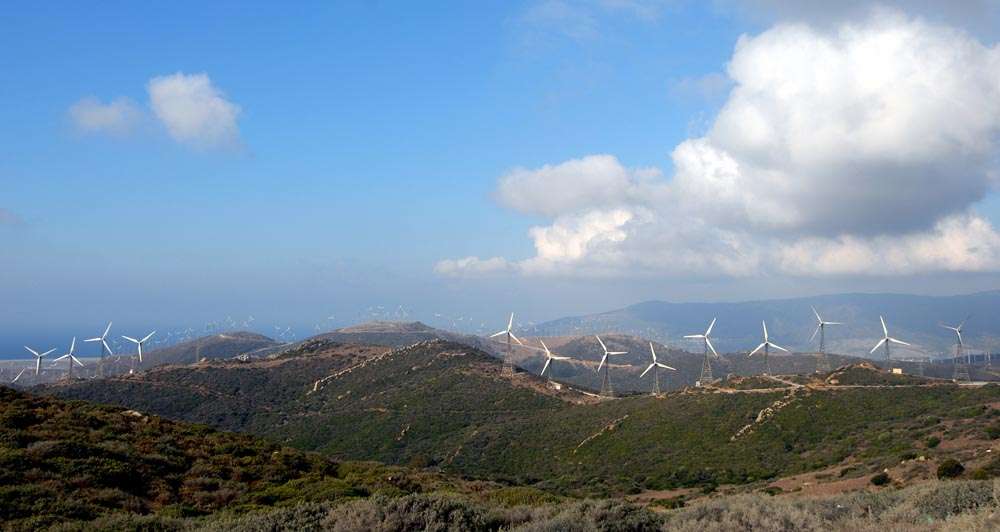
Notable for being the southernmost tip of Spain, we’d driven towards Tarifa past Algeciras, glimpsing the contentious pile that is Gibraltar, until cresting a mountain top in the car and seeing literally thousands of wind turbines smothering the landscape for miles. Fascinated by the sheer expanse of these huge propellers slicing the air, we stopped on a ridge and got out of the car.
It’s immediately plain why the wind turbines are located here as it must be the windiest place on earth – we could barely stand against the gale that battered us and whose noise matched that of the howling turbines around us. The immense power of this wind that is being harnessed is truly awe inspiring and whilst our initial thought was that the turbines were a blight on the landscape, we can’t think that anything either animal or human would actually want to inhabit the area instead.
Not surprisingly, Tarifa, a pleasant little fishing port down on the coast, with its sandy beaches is a haven for kite and windsurfers – although we’d imagine you have to be pretty proficient to avoid landing up in North Africa unannounced, as its only 11kms away!
Tarifa’s quiet, wind-free narrow cobbled streets, whitewashed houses clad with tumbling jasmine and ornate wrought-ironwork make the old town a charming place to visit. This ancient town’s original castellated city walls are an intrinsic part of the town’s architecture.
Only 15km to the north is the ancient Roman town of Bolonia, well worth a visit for its well preserved ruins.
Cadiz
Since the Phoenicians pitched up in 1000BC Cadiz is believed to be the oldest continuously inhabited settlement in Europe – and it certainly rings bells for us, harking back to our school-day history lessons about Carthaginians, Romans, Spanish Galleons to the Americas and the warlike attentions of Sir Francis Drake – and as a result of playing host to nearly everyone it holds something for every modern visitor. History, arts, beaches and dining are all more than adequately catered for in this compact city.
Surrounded almost entirely by water it’s impossible to get lost for too long as you explore the old city. It’s quite Moorish in appearance and appears strangely dilapidated but nevertheless intriguing with narrow cobbled streets and small squares. The golden cupola of the cathedral is never far away and acts as a good landmark for reference. You’ll inevitably end up on the sea front where you’ll be kept company by an inordinate number of cats sunning themselves on the rocks.
Jerez
Synonymous with Sherry, horses and flamenco, Jerez is a quaint and charming old town dating back to Moorish times; notable for its beautiful palm lined squares and wide streets with rows of jacaranda trees that lead to and join the various ‘bodega’ or wine manufacturers, which unusually occupy the town centre.
The surrounding white chalky soil of the Jerez area is ideal for the cultivation of Palamino grapes which produce the sherry for which Jerez is so well known and which attracted the original entrepreneurs (many of them British) to set up the distilleries that have become today’s household names.
When you’ve finished your ‘tasting sessions’ at the various bodega, don’t miss a diversion to the magnificent stallions of the Royal Andalusian School of Equestrian Art, who perform every Thursday during the summer at the riding school. You can include a tour of the 60 stables around a cobbled courtyard and their fascinating tack room displaying equipment, new and old, worn by the performing stallions.
Many other attractions of this aristocratic town cement its place in any Andalucia tour with notable historic sites such as the 11th century Moorish fortress that has been partially restored.
A perhaps quirky and unscheduled detour takes us off the map, 35kms to the northwest of Seville after we spot the Rio Tinto mines north of Huelva. Rio Tinto with its subsidiaries is the biggest mining company in the world and has been mired in controversy, human rights abuse claims, environmental arrogance and international intrigue for centuries. The multi-coloured spectrum of mineral strata that greet the visitor takes some assimilation of its scale as the landscape is the open cast mine canyons; reputedly the original mines of King Solomon. Although dating back to the Phoenicians, the mines found true prosperity under British control and a visit to the ‘Mining Park’ with its museum, workers’ village of ‘Bella Vista’ and mine railway is truly memorable if not disquieting for the sheer scale of the operation.

You’ll undoubtedly spend longer here than you’d at first imagine. Our picture is simply one small snapshot of excavations of up to 350mtrs deep over a distance that has consumed mountains, valleys and entire villages. Now back under Spanish company control, the mines resumed working in 2015 and continue to be a compulsively fascinating blot on the earth’s landscape.
Seville
Although we inevitably ended up in the Santa Cruz ‘Barrio’ or neighbourhood, which is the most quaint and fascinating of the areas within Seville, you should also wander around the small squares and narrow alleys, where ancient houses almost seem to touch across the cobbles and leafy patios of private mansions can be spied through their wrought iron entrance gates. Getting lost in the backstreets of Seville and stumbling across palaces and churches in this enchanting city might be one of the best experiences of your visit.
A ‘must visit’ is the Alcazar Royal Palace, which although reflecting Moorish architecture actually spans several centuries that are represented around different areas of the palace. For aficionados of ‘Game of Thrones’ you’ll enjoy investigating which areas were used for shooting several scenes in the series.
A balmy evening walk around the old town is certainly rewarded by a glass or two in any of the pavement bars.
Cordoba
Originally owing its existence to its strategic importance for the Romans as the highest navigable point of the river, Cordoba’s hour of glory came as capital of the Moorish Empire. The Mezquita, or great mosque, is testament to the great investment that went into the city, becoming the largest mosque in Islam. Such was its beauty that when Christianity re-established itself, instead of being destroyed, it was used as magnificent surroundings for a new cathedral – and as such became an almost unique combination and blending of religious architecture.
In Cordoba the Alcazar is eclipsed by its own gardens which follow the traditional Moorish rectangular style and are on cascading terraced levels – a better bet than the palace itself.
We spent hours walking the streets, both in daytime and evening, mesmerised by the warmth and beauty of this ancient city.

Jaen
It was here that we decided that we’d spent too much time enjoying Andalucía so far and needed to clip the journey to get to Granada with sufficient time to enjoy it.
The city of Jaen is sprawling with a completely integrated ancient and modern personality and some great views are to be had if you’ve the time to enjoy them.
For us, it was most notable for driving the wrong way up a very busy and fortunately wide, one-way street that turned into pedestrian area. People must have thought us mad, or foreign, but fortunately kept out of our way as we blithely continued to break the law until exiting at the far end of the road.
Granada
The architectural jewel that is Granada cannot fail to please. We had phoned ahead to book the 4-star Parador de Granada which, set in a 15th-century convent is actually within the grounds of the Alhambra Palace; encapsulating all that is beautiful about Granada, it could tempt you not to bother investigating further.
As well as a beautiful location this luxurious hotel combines original features including stone archways, beamed ceilings and antique furnishings all within a chic interior that features a popular restaurant. You could be forgiven for thinking you were a Moorish king or princess when you book in here, such is the ambiance.

We recommend that you do venture out, however tempting the hotel itself is, as there’s much to see and do – starting with just the views from the hilltop on which the Alhambra is situated, which vies with anything else in Andalucía for grandeur as you overlook the whole of Granada with a backdrop of the foothills of the Sierra Nevada mountains.
The city itself is only a ten minute walk away but the Alhambra is a grand, sprawling hilltop fortress complex encompassing royal palaces, serene patios and reflecting pools from the Nasrid dynasty, as well as the fountains and orchards of the Generalife gardens that’ll easily keep you thoroughly occupied for a full day – if not more.
The Alhambra was a fitting end and tribute to all that is Andalucía and our short time on our whistle-stop tour.
Cutar
Not really wishing to finish our tour, we couldn’t help but detour on our journey back to Malaga – to the ‘White town’ of Cutar; a sleepy but fascinating hilltop town with its origins in Moorish history but today surrounded by an expansive rolling landscape of olive trees under cultivation. you’ll find Cutar about 35kms before reaching Malaga.

All-in-all, throughout Andalucia, we loved the local people, the places, the scenery, colours, flowers and decoration of this beautiful part of Spain, which defies the packaged stereotypes we often expect, by preserving so many cultural and architectural influences from so many centuries.
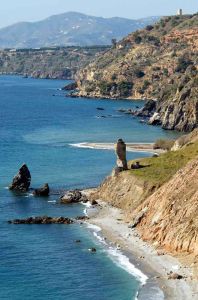
As we neared the end of our tour of this region we reflected on the fact that the journey lacked only by our ability to do justice to it in such a short time – that we could easily have doubled our time in the area in order to absorb its true character.
They always say that its good to leave a place wanting more and Andalucia certainly deserves more attention.
So for now we have to content ourselves that it’s well worth a return visit when we’ve covered all the other wonders of the world!













